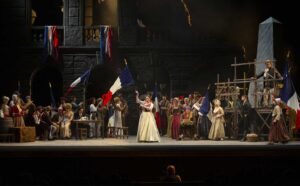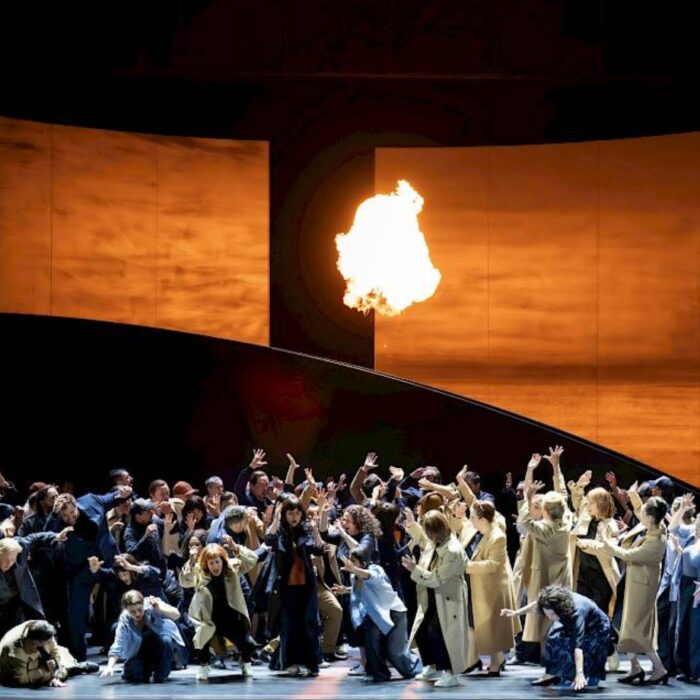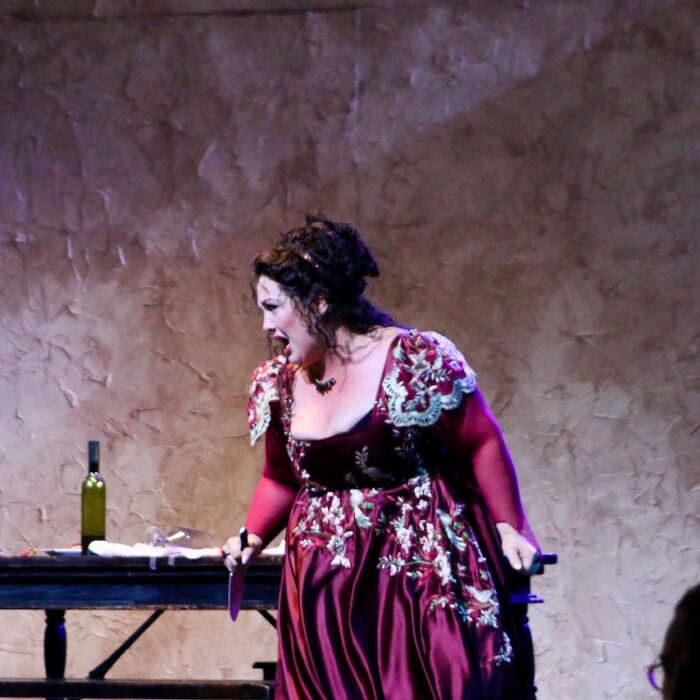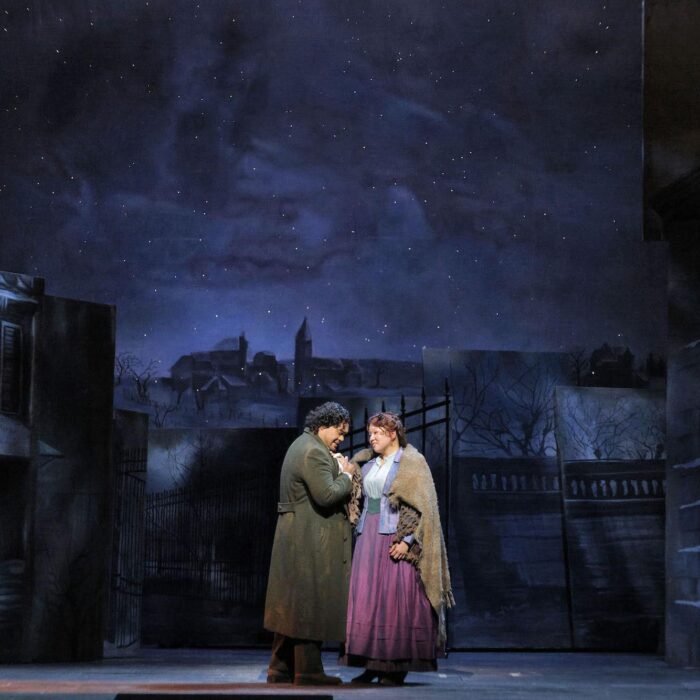
Teatro Grande di Brescia 2024 Review: Andrea Chénier
Illuminating Production Masterfully Balances Romantic Lyricism with Historical Drama
By Bernardo Gaitan(Photo: Andrea Butti)
The year 1896 marked a pivotal moment in the history of Italian opera with the debut of two titles that would come to define the global operatic repertoire. On February 1, the Teatro Regio di Torino hosted the premiere of Puccini’s “La Bohème,” while just weeks later, on March 28, the Teatro alla Scala in Milan was the stage for the debut of Umberto Giordano’s “Andrea Chénier.” As musicologist Marco Bizzarini points out, both works not only achieved immediate success but also secured their places as enduring pillars of the international operatic repertoire.
In his analysis in the show program, Bizzarini reflects on the temporal coincidence of these premieres and the rivalry between their composers, both members of the so-called Giovane Scuola Italiana. Despite this, a significant difference existed: Puccini, at 37, was already enjoying fame thanks to the recent success of “Manon Lescaut,” while Giordano, the youngest of the group, took on the ambitious challenge of composing a major work at just 29 years old. Behind their shared success was the fierce competition between music publishers. Puccini had the support of Ricordi, which secured the prestigious Teatro Regio di Torino for “La Bohème,” while Giordano, backed by Sonzogno, obtained the coveted stage of the Teatro alla Scala for the premiere of “Andrea Chénier.”
Set against the turbulent backdrop of the French Revolution, “Andrea Chénier” masterfully weaves together historical drama with the tragic destinies of its three central characters: the idealistic poet Andrea Chénier, the servant-turned-revolutionary Carlo Gérard, and the aristocrat Maddalena di Coigny.
New Production Highlights
This time, the majestic Teatro Grande in Brescia raised its curtain for a new production of “Andrea Chénier,” presented under the auspices of the OperaLombardia association, a collaboration involving the Teatro Verdi of Pisa, Teatro del Giglio of Lucca, Teatro Sociale of Rovigo, and Teatro Grande of Brescia.
The stage direction by Andrea Cigni took a classic approach, honoring the theatrical and historical essence of the work. With over 40 productions to his credit, the Tuscan director succeeded in capturing the tension between the ideals of liberty, love, and betrayal that both librettist Luigi Illica and Giordano embedded in the opera. Dario Gessati’s set design skillfully evoked the aristocratic salons and grim prisons of the Revolution, highlighting the societal collapse of the late 18th century with ingenuity despite budgetary constraints. Chicca Ruocco’s costume design showcased the contrasts of class and character with a traditional and highly tasteful aesthetic, while Fiammetta Baldiserri’s lighting employed chiaroscuro to heighten the dramatic intensity of key scenes.
Giordano bequeathed a vibrant score that alternates between moments of intense lyricism and explosive drama. However, in this instance, Francesco Pasqualetti’s baton left much to be desired. Leading the Orchestra I Pomeriggi Musicali, the conductor from Pisa give us a performance lacking nuance and marked by excessive volume. While orchestral moments like the gavotte in the first act and the lively introduction stood out, the overwhelming sound often drowned out the singers for much of the performance. It was only in the final two acts that Pasqualetti managed to find a better balance, allowing for a more appropriate equilibrium.
The OperaLombardia Chorus, under the direction of Massimo Fiocchi Malaspina, added a powerful collective voice to the drama, enhancing the depiction of the revolutionary fervor and the violent unrest of the period.
Illuminating Cast
In the leading role, Angelo Villari portrayed Andrea Chénier with a mix of heroism and sensitivity. While his timbre is not particularly appealing, the tenor demonstrated technical skill, particularly in the upper register during the fourth act. His rendition of “Un dì all’azzurro spazio” was restrained, raising doubts at the start of his performance, but he gradually improved throughout the evening. By the time he reached the anticipated “Come un bel dì di maggio,” he delivered with much greater confidence, earning well-deserved praise.
Gangsoon Kim took on the role of Carlo Gérard, the morally complex antagonist, with mixed results. His vocal performance, hampered by limited projection, failed to deliver the expected depth in key moments such as “Nemico della patria,” which went largely unnoticed. However, his acting successfully conveyed the emotional contradictions of the character.
In contrast, Federica Vitali, as Maddalena di Coigny, emerged as the standout performer of the evening. Her portrayal started cautiously but gained strength and emotional depth as the opera progressed. She shone in “La mamma morta,” blending lyricism and technique with great sensitivity, and culminated in a passionate “Vicino a te s’acqueta” alongside Villari, one of the night’s most applauded moments.
The supporting cast delivered solid performances in their respective roles. Alessandra Palomba took on two roles with an excessive vibrato, that was at odds with her otherwise elegant stage presence. As the Contessa di Coigny, she embodied aristocratic refinement, while as the elderly Madelon, she conveyed genuine poignancy. Alessandro Abis as Roucher provided vocal solidity and a convincing performance. Mexican tenor Fernando Cisneros impressed as Fléville and Mathieu, bringing strong stage presence, vocal power, and impeccable Italian pronunciation.
Overall, this production of “Andrea Chénier” did not stand out for its vocal excellence but rather for its faithful staging, which honored the grandeur of an opera that masterfully balances romantic lyricism with historical drama.
Categories
Reviews


